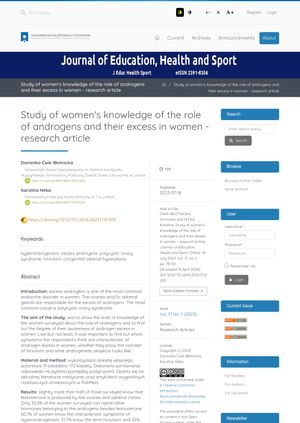Study of Women's Knowledge of the Role of Androgens and Their Excess
July 2023
in “
Journal of Education, Health and Sport
”

TLDR Most women lack knowledge about androgens and their excess symptoms.
The research surveyed 172 women to understand their knowledge about androgens and symptoms of androgen excess. The findings revealed that just over half of the participants knew that testosterone is produced by the ovaries and adrenal cortex, while only 35.5% could identify other androgens besides testosterone. About 60.7% were aware of the symptoms of hyperandrogenism, 51.7% knew the term hirsutism, and 32% correctly identified the most common cause. The study concluded that there is a need to increase and spread information about the symptoms and causes of androgen excess in women, particularly among those without a medical background.